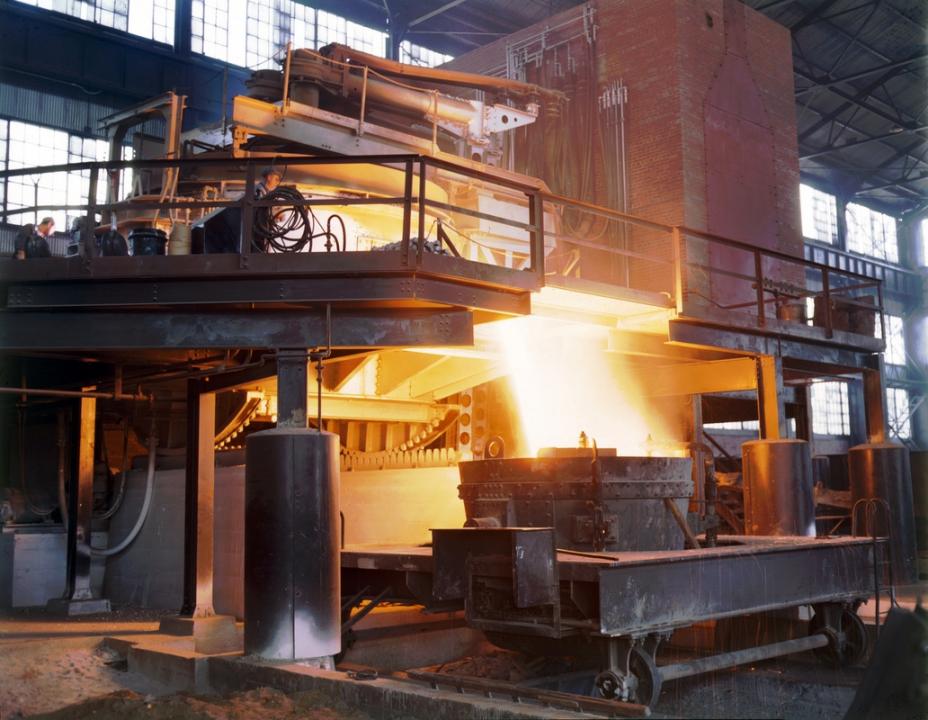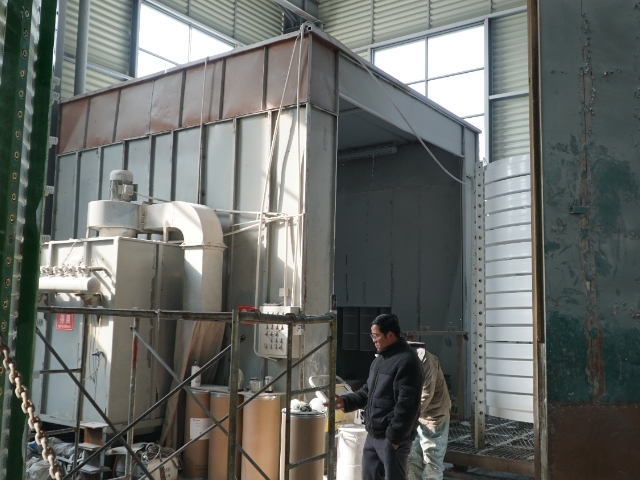How Does a Melting Furnace Work for Steel?
The Medium Frequency Induction Melting Furnace, made by HK Frequency Furnace, is a modern tool for melting different metals and alloys efficiently and accurately. This furnace uses medium-frequency induction heating to reach the best melting conditions. It is essential in industries where melting metal is a key process. Hongkang currently has two factories that cover more than 5,000 square meters. These factories have all the necessary production equipment and processes. The furnaces they produce range from 50KW to 30,000KW in power and can melt between 20Kg to 90,000Kg of metal. Medium-frequency induction melting is important for steel production because it ensures high quality and precise control during the melting process.
Basic Principles of Induction Melting
Electromagnetic Induction Process
Induction melting uses electromagnetic induction to heat metals. A coil surrounds the metal to be melted. When electric current flows through the coil, it creates a magnetic field. This magnetic field induces electric currents in the metal. The electric currents generate heat within the metal. This heat melts the metal efficiently.
Role of Alternating Current (AC) in Heating the Metal
Alternating current (AC) is essential in induction melting. AC changes direction many times per second. This change creates a changing magnetic field. The changing magnetic field induces currents in the metal. These currents produce heat. Without AC, the magnetic field would not change, and no heat would be generated.
How Induction Coils Generate Heat
Induction coils generate heat through electromagnetic induction. When AC flows through the coil, it creates a magnetic field around it. The metal inside the coil experiences this magnetic field. The magnetic field induces currents in the metal. These currents cause the metal to heat up. The shape and placement of the coil ensure even heating of the metal.
Medium Frequency Power Supply
Definition of Medium Frequency (1-10 kHz)
Medium frequency refers to electrical frequencies between 1 and 10 kilohertz (kHz). This range is higher than low frequency and lower than high frequency. Medium frequency is ideal for induction melting because it balances heating efficiency and penetration depth. It allows for effective heating of large metal volumes.
Why Medium Frequency Is Ideal for Steel Melting
Medium frequency is perfect for melting steel. It provides deep penetration of the magnetic field into the steel. This ensures uniform heating throughout the metal. Medium frequency also allows for faster heating times. It improves energy efficiency and reduces heating costs. These benefits make medium frequency ideal for steel melting.
Advantages Over Low and High-Frequency Systems
Medium frequency has several advantages over low and high-frequency systems. Low-frequency systems heat slowly and are less efficient for large metals. High-frequency systems heat very quickly but may not penetrate deeply, leading to uneven heating. Medium frequency offers a good balance. It heats metals quickly and evenly, making the melting process more efficient.
Components of a Medium Frequency Induction Melting Furnace
Induction Coil: Shape and Placement for Efficient Heating
The induction coil is a key component of the furnace. It is usually shaped to fit around the crucible holding the metal. The coil is placed close to the metal to maximize heating efficiency. Its shape ensures the magnetic field covers the entire metal volume. Proper placement of the coil leads to even and effective heating.
Furnace Crucible: Material and Design
The furnace crucible holds the metal to be melted. It is made from materials that can withstand high temperatures. Common materials include graphite and silicon carbide. The design of the crucible allows easy removal of molten metal. It also ensures the metal heats evenly without contamination.
Power Supply: Frequency Control and Regulation
The power supply controls the frequency and amount of electric current sent to the induction coil. It ensures the correct medium frequency is maintained. The power supply regulates the current to achieve the desired heating rate. Proper control and regulation are essential for efficient and safe melting.
Cooling System: Prevents Overheating of the Coil and Furnace
The cooling system protects the furnace components from overheating. It typically uses water or air to remove excess heat. The cooling system keeps the induction coil and other parts at safe temperatures. This prevents damage to the furnace and ensures continuous operation.
Process of Steel Melting
Loading Raw Steel into the Furnace
The melting process starts by loading raw steel into the crucible. The crucible is placed inside the induction coil. Proper loading ensures efficient heating and melting. The amount of steel loaded depends on the furnace capacity.
Induction Coil Generating a Magnetic Field
Once the steel is loaded, the induction coil is activated. It generates a strong magnetic field around the crucible. This magnetic field penetrates the steel and induces electric currents within it.
Current Induced in the Steel, Causing Resistance Heating
The induced currents flow through the steel, creating resistance. This resistance generates heat within the metal. The heat causes the steel to rise in temperature and eventually melt. The process ensures rapid and uniform heating.
Melting Point of Steel and the Role of Temperature Control
Steel melts at high temperatures, typically around 1,500°C. Precise temperature control is crucial during melting. The furnace monitors and adjusts the temperature to reach the melting point. Proper control prevents overheating and ensures the steel melts evenly.
Advantages of Medium Frequency Induction Melting
Faster Heating Times
Medium-frequency induction furnaces heat metals quickly. Faster heating reduces the time needed for melting. This increases production efficiency and allows for higher throughput in industrial settings.
Energy Efficiency
These furnaces use energy efficiently. Medium frequency minimizes energy loss during the heating process. Efficient energy use lowers operating costs and makes the melting process more sustainable.
Reduced Oxidation of Steel
Induction melting occurs in a controlled environment. This reduces the exposure of steel to oxygen. Reduced oxidation prevents impurities and maintains high steel quality. It also minimizes the need for additional refining steps.
Precise Temperature Control
Medium-frequency furnaces offer precise control over temperature. Accurate temperature management ensures consistent melting conditions. This leads to high-quality steel with uniform properties and minimal defects.
Applications
Steel Production
Medium-frequency induction furnaces are widely used in steel production. They are ideal for creating various steel alloys and castings. The precise heating allows for the production of high-quality steel products tailored to specific needs.
High-Quality Steel for Various Industries
High-quality steel produced by induction melting is essential for many industries. The automotive industry uses it for strong and durable car parts. The aerospace industry relies on it for lightweight and high-strength components. Induction melting ensures the steel meets the rigorous standards required in these fields.
Closing Words
Medium-frequency induction melting furnaces are key for melting steel efficiently. They heat metals quickly and evenly. These furnaces use less energy and keep steel quality high. They are important in industries like automotive and aerospace. Using medium-frequency induction melting helps companies produce better steel and save costs.


